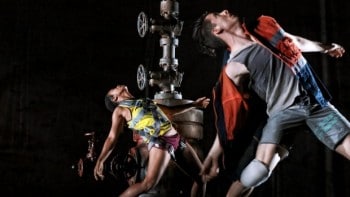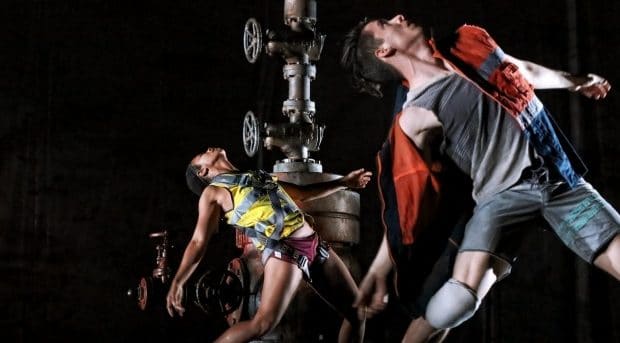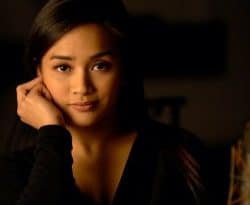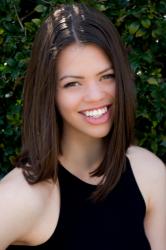Cut The Sky, Sydney Festival
Marrugeku’s Cut the Sky is an inventive mélange of dance, song, and poetry fuelled by pain and anger. It’s a lens through which to view climate change and to reflect upon society’s treatment of the planet.
Broome based dance company Marrugeku cross beyond disciplinary boundaries to create innovative intercultural dance theatre with a strong Indigenous influence based on the history and social context of their community. The cast collectively composed Cut The Sky with direction by Rachael Swain to compel audiences to consider our past, present and future in hopes to prompt change.

The piece opens in the midst of a terrible storm. Through dance, physical theatre and the lighting and soundscape (media design and visual concept by Sonal Jain and Mriganka Madhukaillya, lighting design by Damien Cooper and cinematography by Sam James) we are thrust into a chaotic disaster, and we watch as the impacts of this storm unfold – both for people and for nature.
This isn’t a piece led by strong narrative or plot; however, the shape and contrast between different scenes is evident enough to be followed. Some scenes are more powerful than others, whilst some lack clarity of direction and therefore aren’t as effective as they could be in engaging with the central tenet of the piece.
In a particularly powerful scene, Miranda Wheen and Josh Mu perform haunting contemporary style choreography accompanied by Eric Avery on violin. The pain and desperation of both dancers was clearly palpable, and complemented by excellent technique and control of movement.
Later, Wheen appears as a geologist delivering a frantic speech about the state of our planet. She poses the powerful question: ‘Do we care enough to change?’
Her wild but always precise movement echoed the frenzy of her words.
The piece also found power in stillness. The poetry written and delivered by Edwin Lee Mulligan was often presented with minimal action on stage; we could focus on nothing but our treatment of our land.
Other scenes lacked the clarity and thus potency of these moments, but nevertheless were pleasant to watch. All dancers brought such a raw pain and tenderness to their performances, the passion overflowing from the stage. And the choreography by Dalisa Pigram and Serge Aime Coulibaly flowed organically from the heart of the piece, and never felt forced or showy.
Cut The Sky was shaped around five songs. At times, the songs felt the most stilted moments of the show as they didn’t always fit with the overall tone and pace. The most successful was the first, ‘Weeping Song’, bringing calm after the opening chaos.
There were a few technical issues in the sound design; at times the soundscape was overbearingly loud and made the actors inaudible. However, mostly the design of the show significantly enhanced the performers’ work. The minimal set (by Stephen Curtis) of a gas pipeline, with the backdrop of a screen that often had different landscapes projected onto it, was a bare and appropriate backdrop for the frantic action of the performers.
The final scene is stunning; as rainwater cascades from the ceiling (designed by Joey Ruigrok Van Der Werven) there is a final sense hope, providing a vision of our possible future, if the message of this piece is heeded.




